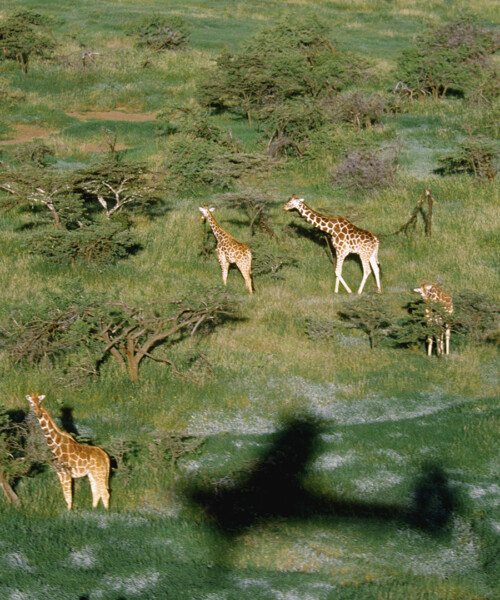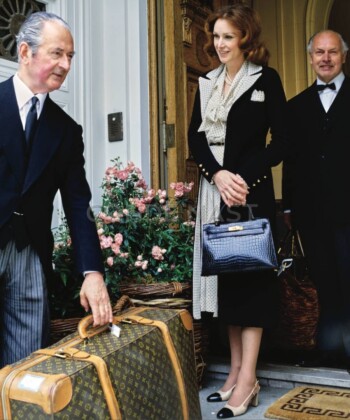This spring, 33 lions were flown on a chartered wide-body jetliner from Colombia and Peru to Johannesburg. Last year, 10 rhinos—the most ever on a plane at one time—were boarded onto a four-engine cargo plane in South Africa and transported north to Botswana. Up to three times a week, a single-engine turboprop takes off from Los Angeles’ Van Nuys Airport, the city’s hub for private jet travel, filled on every journey with close to three dozen dogs.
These animals make up a new sort of jet set, though the flights they’re on are hardly leisure jaunts. A cadre of conservationists are banding together and funding expensive private jet travel to whisk away at-risk animals from high-poaching areas and death-row pet shelters. For some, one-way airfare can reach tens of thousands of dollars. Custom crates need to be constructed. And just the way airline companies maximize the number of seats on a plane, countless hours are spent configuring the layout for the animals’ holding containers. Despite the costs involved, these big-ticket flights to safety are attracting substantial financial backing—even though charitable giving to animal and environmental causes makes up only about three percent of the total Americans give philanthropically every year.
Such pricey missions are possible these days for a few reasons. More and more famous names, such as Leonardo DiCaprio and princes William and Harry, are committing themselves to helping animals and bringing attention to their plight. Much of the cause’s recent success also stems from invoking the prestige of private-jet travel (some airlifts are dubbed “Flights to Freedom”), not to mention the increased attention on big-game animal causes since the widely reported shooting last year of Cecil the Lion.
The 33 lions, for one, were saved from abusive conditions in South American circuses by Animal Defenders International, an animal welfare group that has successfully lobbied to outlaw using wild animals in circus acts. “I don’t travel in first class and get a flat bed where I can lie down,” says ADI vice president Tim Phillips, “but all these lions did. They had as much leg room as possible, and once the lights were turned off, they laid down and slept well for most of the flight.”
In the circuses, some of the lions had been starved and abused. After ADI won their release, a team travelled throughout Peru and Colombia to confiscate each large cat, then housed them in special facilities for 18 months until they could raise $330,000 for the flight—the most ambitious airlift of lions ever undertaken—costing $10,000 per lion, aboard a McDonnell-Douglas MD11 to a private sanctuary in South Africa. “In-flight catering gave them a light snack somewhere over the Atlantic, a few treats of chunks of meat,” says Phillips.

Photo: Alejandro Ayala/Xinhua/Eyevine/Redux
Two-thirds of the trip’s cost, $220,000, was raised by online fundraising platform GreaterGood. Its director of operations, Noah Horton, says what’s remarkable about the campaign was not only the amount of money raised but how quickly the dollars flowed in. More than 7,000 individual donors took part, many brought in by a social media campaign. “We really framed this lion campaign in such a way that we introduced the audience to every individual lion,” says Horton. “They knew exactly what their donation was doing: We were selling this trip across the ocean so that the animals could go to a sanctuary, and that connection really resonated with individuals.”
Rhinos Without Borders is the group behind the relocation of the species from South Africa—where illegal killing of the animals for their horns outside guarded sanctuaries is decimating the population—to Botswana, which has a shoot-on-sight policy against poachers and a very low rate of illegal killing. In the past, rhinos have tended to be moved to safety by truck, but their extreme endangerment is pushing conservationists to resort to bigger, more expensive moves that can protect them more quickly. The nonprofit is co-founded by the andBeyond travel company and wildlife photographers and filmmakers Dereck and Beverly Joubert. Two years ago, after a quarter-century spent documenting African wildlife and witnessing the toll poaching is taking, the couple resolved to get out from behind the camera to help. Their goal is to move 250 rhinos, at $45,000 each, to relative safety in Botswana over the next two years. “We are losing rhinos at a rate of one every seven hours,” says Beverly. “People think rhino horn can cure them from virtually anything—it does nothing at all. It’s a big misconception that can lead to the death of a species.” The situation is so dire that other conservationists are looking to fly rhinos off the African continent altogether to create insurance populations in places such as Texas and Australia.
Throughout the U.S., domesticated dogs are regularly taking flight as well. A handful of groups formed by volunteer pilots—including California’s Wings of Rescue and South Carolina’s Pilots N Paws—transport dogs from cities with overcrowded kill shelters to other areas of the country where homes can be found for them.
Wings of Rescue’s primary aircraft is owned by the group’s founder, Yehuda Netanel, a commercial shopping-center developer and longtime pilot who personally flies about a third of the missions on his Pilatus PC-12. The five-year-old group, which has saved more than 19,000 adoptable pets from likely death in shelters, would like to be doing five flights every week, although donations currently allow them to schedule just one to three.
The need for rescue will certainly continue, at least for wildlife. As global warming worsens and humans take more and more habitat away, animals are increasingly left in fragmented areas, unable to migrate without human assistance. “For some species,” says Ileene Anderson, senior scientist at the Center for Biological Diversity, “ ‘facilitated migration’ will be the only way they will survive.”
Photo: Getty Images





































